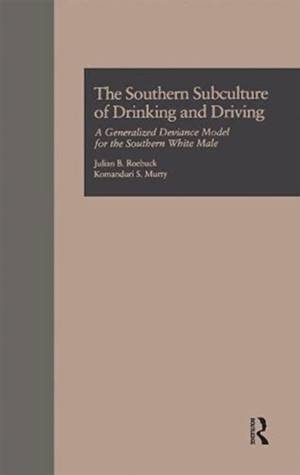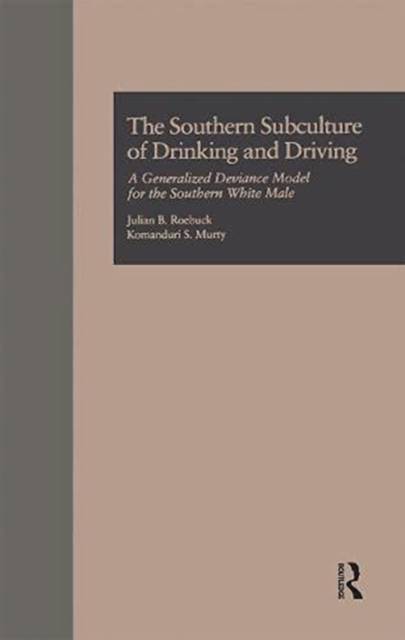
Door een staking bij bpost kan je online bestelling op dit moment iets langer onderweg zijn dan voorzien. Dringend iets nodig? Onze winkels ontvangen jou met open armen!
- Afhalen na 1 uur in een winkel met voorraad
- Gratis thuislevering in België vanaf € 30
- Ruim aanbod met 7 miljoen producten
Door een staking bij bpost kan je online bestelling op dit moment iets langer onderweg zijn dan voorzien. Dringend iets nodig? Onze winkels ontvangen jou met open armen!
- Afhalen na 1 uur in een winkel met voorraad
- Gratis thuislevering in België vanaf € 30
- Ruim aanbod met 7 miljoen producten
Zoeken
The Southern Subculture of Drinking and Driving
A Generalized Deviance Model for the Southern White Male
Julian B Roebuck, Komanduri S Murty
€ 80,95
+ 161 punten
Uitvoering
Omschrijving
First published in 1996. The Southern Subculture of Drinking and Driving is part of the Criminal Justice series. Volumes in the Current Issues in Criminal Justice series focus on scholarship, original thought and research, and readability. This one is no different. Julian B. Roebuck and Komanduri S. Murty have produced a volume that will be of vital interest to those who study and create policy on drunken driving ? one of the more enduring social problems of the past two decades. The volume has two major components that make it unique in the drunken driving literature. First, Roebuck and Murty focus on drunken drivers themselves and, through the use of a large dataset, add to our knowledge of that group of people by describing their characteristics. Second, and perhaps more important, Roebuck and Murty delve into the phenomenology of the drunken driver through a lengthy interview process.
Specificaties
Betrokkenen
- Auteur(s):
- Uitgeverij:
Inhoud
- Aantal bladzijden:
- 232
- Taal:
- Engels
- Reeks:
- Reeksnummer:
- nr. 17
Eigenschappen
- Productcode (EAN):
- 9781138982642
- Verschijningsdatum:
- 30/09/2021
- Uitvoering:
- Paperback
- Formaat:
- Trade paperback (VS)
- Afmetingen:
- 140 mm x 216 mm
- Gewicht:
- 290 g

Alleen bij Standaard Boekhandel
+ 161 punten op je klantenkaart van Standaard Boekhandel
Beoordelingen
We publiceren alleen reviews die voldoen aan de voorwaarden voor reviews. Bekijk onze voorwaarden voor reviews.











